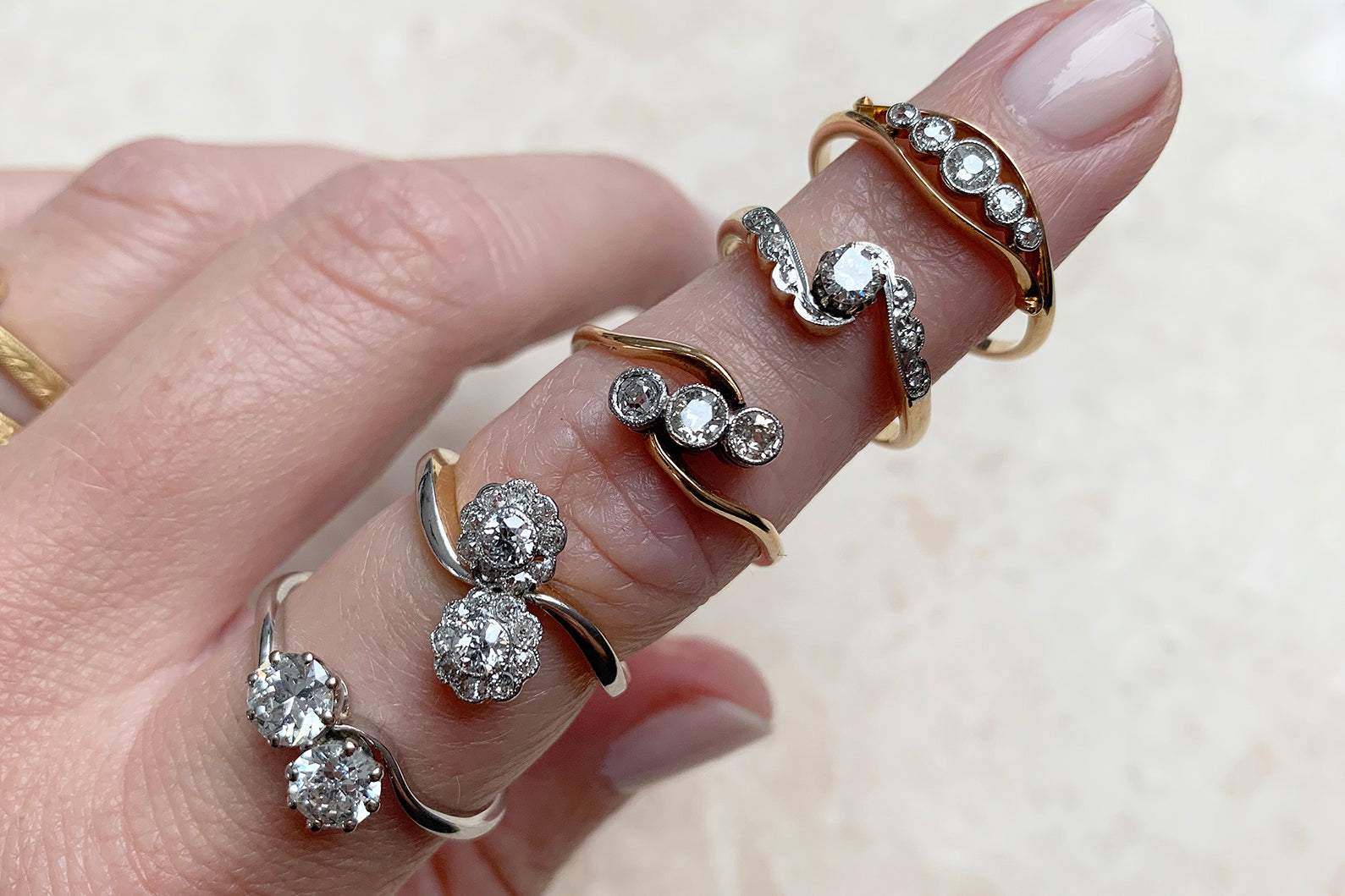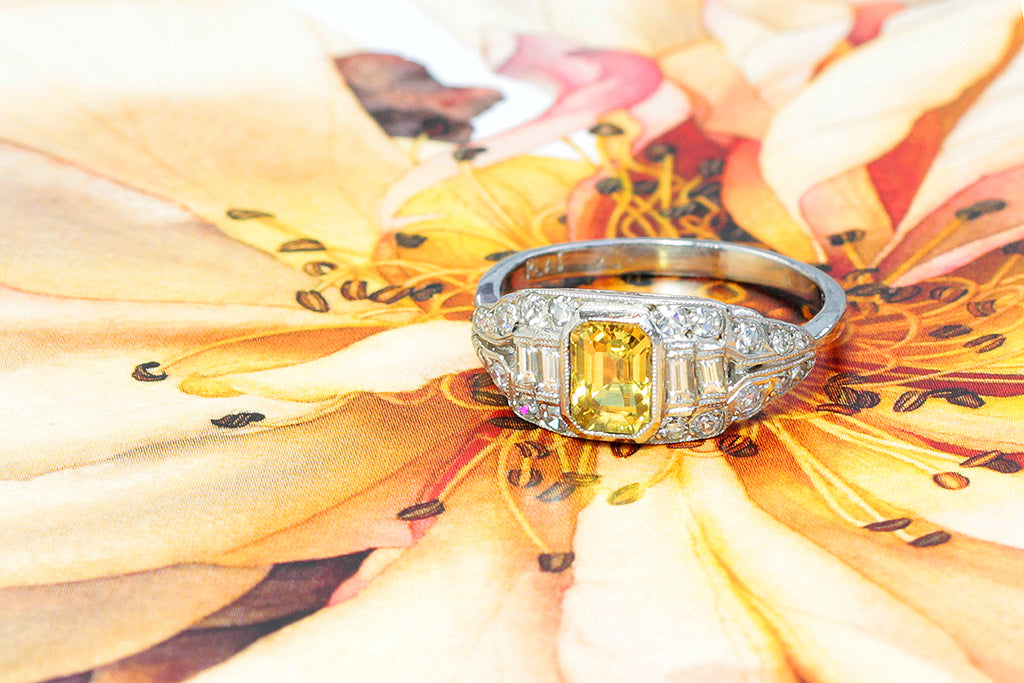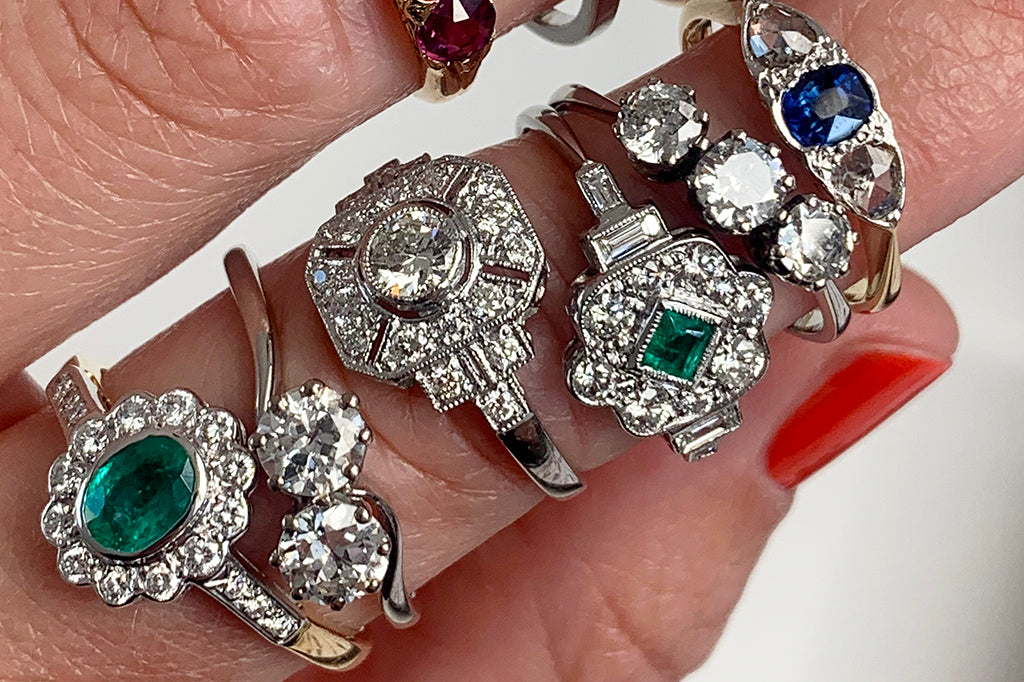
One person's trash: The Vintage Ring Co. and Lebrusan Studio on the circular engagement ring economy
“I like to think, when a dream falls into pieces, it multiplies and becomes more bright and beautiful dreams.” These are the words of Wallace Chan: jewellery designer, craftsman and one of a number of keynote speakers at Harvard University’s State of the Art Jewelry Summit last month, where the jewellery industry was framed as a key player in tackling climate change. Chan is an advocate for recycling, repurposing, and “getting the best out of every last piece of material,” and he’s not alone.
This month, pioneering ethical jewellery brand Lebrusan Studio reported – for the 10th sales quarter on the trot – an overwhelming preference for recycled materials amongst their engagement ring and wedding band clients. Though the London-based jewellery designer offers traceable and fair-traded options like Fairtrade Gold and artisanal Ocean Diamonds for those who wish to make a positive socioeconomic impact with their purchase, 85% of all jewellery bought between April and June was cast in recycled gold or platinum. Meanwhile, two-thirds of all engagement rings sold were set with a reclaimed gemstone.
Lebrusan Studio, nominated for three sustainability-related industry awards just this year, is vocal about its advocacy of the Circular Economy model, wherein a product is reintroduced to the supply chain once its user is finished with it.
“An estimated 6,000lbs of mineral waste is created and 250 tonnes of earth shifted for every carat of natural diamond,” the brand explains in a recent article. “For context, 116 million carats were mined in 2021; that's 29 billion tonnes of earth displaced in one year. What’s more, in repeatedly drilling holes into the ground and extracting diamonds from them, we are consuming a finite resource; with a recent analysis by Bain finding that that a number of diamond mines will be fully depleted by 2030.
“The beauty of creating an engagement ring using a reclaimed diamond is in offering a beautiful unearthed gem a second lease of life instead.”
Lending themselves even more readily to the Circular Economy model are precious metals like platinum and gold, which can be recycled again and again with no degradation in quality. The environmental impact of recycled metal is incomparable to that which is newly mined. “It’s thought that one single gram of recycled gold requires 680 litres less water than the same volume of newly mined gold, whilst the energy savings are equivalent to almost 16 years of mobile phone charging,” Lebrusan Studio explains. “In our current state of climate emergency, offering recycled gold and platinum to our engagement ring clients is a no-brainer.”
Repurposing old precious materials is not only beneficial from an environmental perspective. In many instances, it also enables us to celebrate legacy and ensure that memories and sentiments may be passed down from one generation to the next. Through its bespoke remodelling service, Lebrusan Studio invites its clients to create new engagement rings from their time-honoured treasures. Processes include melting down old pieces to re-use their metal, refurbishing weathered gemstones and re-homing them in new mounts.
There is of course the argument, however, that the means by which metals are recycled, old gemstones restored and new jewellery manufactured are unavoidably energy-consuming and emission-producing. Though significantly less impactive on the environment than dealing in newly mined materials, these processes undeniably centre on the act of creating something new. For those who wish to avoid contributing to any further production, there is the option to source an entire engagement ring second-hand. The Vintage Ring Company exists to accommodate those very people.
Spanning in era from Victorian to the 1990s and ranging in price from £650 to £5,000, The Vintage Ring Company’s collection of jewels is varied, yet underpinned by a fundamental commonality: every single engagement ring is pre-loved. No matter how weathered or well preserved, every ring sourced by the retailer goes through a rigorous process of checking, cleaning, polishing and, where necessary, repair. Each is independently assessed by the London Assay Office, then sold with a signed Certificate of Authenticity and specialist care instructions. In investing this time and energy into the second-hand jewellery it sources, The Vintage Ring Company hopes to equip each vintage ring with the foundations to live a long and healthy new life, minimising the risk of future degradation. After all, a fundamental role of any retailer that wishes to champion a circular business model is taking responsibility for the products it sells beyond the point of purchase.
By re-introducing historic pieces of jewellery to the market and almost completely omitting the need for manufacturing operations in the process, second-hand jewellers like The Vintage Ring Company are arguably the most environmentally sustainable option for an engagement ring shopper hoping to minimise their carbon footprint.
The question of what constitutes an ‘ethical’ engagement ring, however, is of course a nuanced argument. Purchasing a pre-loved ring enables us to make use of a fully-formed object that already exists, celebrating enduring craftsmanship and design history whilst doing so. On the other hand, purchasing a new engagement ring made from recycled materials is an opportunity to invest in the game-changers of today. Lebrusan Studio, for example, is a brand which utilises its platform to pioneer the ethical jewellery movement, using its proceeds to champion craftspeople upholding centuries of British cultural heritage in independent manufacturing workshops.
The bottom line is this: Global warming has reached crisis point, and it’s crucial that we slow the rate at which we’re consuming our planet’s natural resources. Thankfully, there are a number of jewellery brands offering us innovative solutions to purchasing an engagement ring without devastating environmental impact. Whether you wish to breathe a second wind into a pre-loved engagement ring or remain drawn to the ‘blank canvas’ appeal of opening your next chapter with a new engagement ring made from recycled materials, it’s easier than ever to enjoy beautiful jewellery whilst minimising the demand for further mining.


